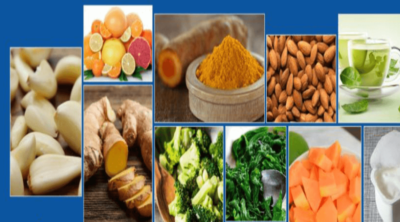
Crab sticks can be a godsend to those who can’t stand the mushy meat of canned crabs or don’t have the patience to battle over carcasses to scoop out every ounce of flesh possible. Ever wondered what imitation crab meat is made of? Most of us love to devour it, but is it really good for us? Read along to find out.
In a NutshellBeing a processed food item, imitation crab meat contains various preservatives, additives, sugar, and added sodium. And it can be enjoyed just like any other processed food. But, if you are keen on deriving nutrition, imitation crab meat is, as the name suggest, not the real deal. Now, from a price perspective, imitation crab meat is definitely cheaper than crab or, for that matter, any other seafood. |
To say that we love the sweet, melt-in-the mouth taste of crab would definitely be an understatement, don’t you think so? It’s definitely the taste of the ocean at its best.
A bite of crab cake with some creamy, tangy mayo, the sweet flesh of crab doused in some buttery, lemony, and garlicky goodness, or just a bit of its blushing red flesh in fresh crispy salad served with dollops of creamy avocados; is what we like to call heaven on earth.
They only heart-wrenching part about eating crabs regularly is the hole that they burn in your pocket (and of course, the gift of an ever-increasing waistline). This is where the imitation crab meat comes to our rescue, giving the world the delicious taste of crab as well as being much lighter on our pockets, and it can be easily found in almost any supermarket.
But what exactly is imitation crab? Does it have any adverse effect on our health? Well, let’s try to find out.
What Exactly is Imitation Crab?
| Imitation crab or crab sticks (also known as krab) is a form of Japanese fish cake known as kamaboko. It is basically a type processed fish called surimi. Surimi is made by first skinning, washing, and pulverizing white flesh fish to form a gelatinous paste. Ideally, Alaska pollock or Atlantic cod is used to make it. Sometimes, swordfish and shark may also be used.
Depending on the desired texture, different proportions of additives, such as egg white, transglutaminases, and starch, are added to it. Sometimes, it may also contain monosodium glutamate (MSG). To enhance the crab-like flavor, various ingredients may be added to it. These commonly include salt, vegetable oil, soy proteins, and seasonings. To maintain its quality even after it has been frozen, various food-grade cryoprotectants like sucrose or sorbitol may be added. In addition to these, to give it a more crab-like appearance food coloring, like carmine, is added. |
Is it Safe to Eat Imitation Crab Meat During Pregnancy?
| Whether crabs sticks are suitable for pregnant woman or not depends on the type of fish used to make it. Well, the biggest problem that concerns pregnant women is the mercury content in the fish. It is therefore advisable that they avoid fish with high mercury content (predatory large fish like shark and swordfish).
Another aspect that may be of concern is whether the packaged fish is contaminated with Listeria monocytogenes. Although the chances of food being contaminated with this bacterium are slim, prevention is a much better alternative. Just in case the craving are way too uncontrollable, heating the fish to 145°F would be helpful. Pregnant women can have about two six-ounces portions of imitation crab per week, provided it is made with low-mercury fish like pollock. |
Nutritional Facts About Imitation Crab
| A 3-ounce serving has about 84 calories, which is almost 4 percent of the required calorie intake. So, it may be safe to say that it pretty much has fewer calories. The cholesterol content of imitation crab is considerably low too, almost 17mg. When it comes to vitamins, it contains almost 0.6 mg of niacin in a 3-ounce serving and almost 0.5 mg of vitamin B-12.
The drawbacks of imitation crab may be its low protein content, a 3-ounce serving contains only about 64 mg of proteins. The content of sodium is also pretty high, about 450 mg in every 3 ounces. The content of phosphorus is around 240 mg. It may also have harmful additives like MSG. As crab stick contains good amount of carbohydrate, almost 12 g per 3 ounces, it is definitely not suitable for those suffering from celiac disease. Due to the addition of sugars, it is definitely not recommended for diabetics. |
* Source: USDA
| Imitation Crab (per 3 oz.) | |
| Calories | 87 |
| Protein | 6.48 g |
| Phosphorus | 240 mg |
| Sodium | 450 mg |
| Potassium | 76 g |
| Niacin | 0.527 mg |
| Vitamin B-12 | 0.48 mg |
| Vitamin B-6 | 0.110 mg |
| Vitamin E | 0.14 mg |
| Total Carbohydrates | 12.75 g |
| Total Sugars | 5.31 g |
| Cholesterol | 17 mg |

